New challenges in biosciences
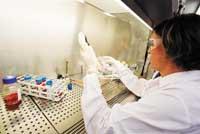
Two centers for the promotion and coordination of projects related to biosciences will be built. One of them will be located in the Technological Park of Zamudio, in Bizkaia, and will be responsible for coordinating the project called BIOGUNE, a project on health and biopharmacology. The second center will be located in Donostia-San Sebastián, in the technological park of Miramón, and will promote research on biomaterials through the MAAB project.
All these projects are coordinated by the Society for the Promotion and Industrial Conversion of the Basque Government. According to María Agirre Biobask, head of the agency, “the objective of these cooperation centers is clear: to coordinate and take advantage of our resources. To do this we will unify all agents in geographic cores. We are few, but we must take advantage of the potential.” In addition, they aim to create 3,000 new jobs in the field of biosciences for the year 2010. But not on any subject.

In María’s opinion, “patents and creators of new companies or those that are exploited commercially will be promoted.” Thus, the areas that want to promote have been classified into three programs: on the one hand, genomics, proteomics and biopharmacology; on the other, biomaterials; and finally, projects related to food security.
All are important. Some have been selected for being strategic in global research. Others, however, because in Euskal Herria there is a special need or force.
Biomaterials Biomaterials
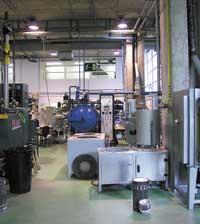
In medicine, the introduction of synthetic materials inside the body, such as prosthesis or pacemakers, is becoming more and more frequent. These materials should not produce allergic or other reactions in the body, that is, they should be biocompatible. They are biomaterials.
Taking into account that the technology of biomaterials, tissue engineering and nanobiotechnology will play an important role, from now on they will tackle different projects. First, we are working on tissue regeneration. They investigate biomaterials capable of regenerating bone, cartilage, skin, cornea, and other organs and tissues. According to Goyo Ortiz de Urbina, researcher at Inasmet and maximum responsible for projects in biomaterials of Biobask, they also study materials with bioactivity, “not only to replace a damaged element, but also functionally active, biocompatible, bioactive and biomimetic materials, such as prosthesis.”

Biosensors are also being developed that will inform about the functioning of the incorporeal biomaterial, small devices or devices that analyze the suitability of the compatibility of this material with tissues. These sensors will allow physicians to monitor the functioning of the biomaterial.
In addition, they aim to develop highly useful microcameras in surgical operations. Its objective is to develop small instruments to minimize the operational impact.
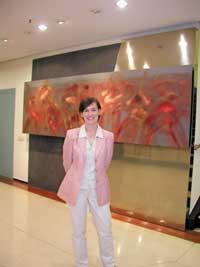
But biomaterials also have other uses. For example, they are used to improve the dosage of drugs. In fact, drugs should flow in very small amounts and to a certain body organ. Therefore, it is necessary to design a suitable coating biomaterial that dissolves in the appropriate place.
Genomics and proteomics
The resolution of the human genome in recent years will greatly limit the direction of medicine in this century. The knowledge of the genome will allow to prediagnose genetic diseases and know the genetic risk of each person for the development of various diseases. One of the objectives of genomics is to make common genetic analyses for health care, something that the Basque Government has wanted to introduce as a strategic issue.
However, genomics has opened their doors to another very important field of research: proteomics. It is probably the field that is most dedicated to biology. Proteomics studies not genes but proteins, since they are responsible for diseases.
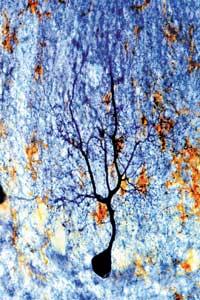
Within the proteomics, several projects will be financed. Some of them will be held in the Biophysics Unit, located at the University of the Basque Country. On the one hand, they will investigate how proteins double, since their activity depends on it. Poorly folded proteins often produce diseases, so projects related to the poor fold of proteins, neurodegenerative diseases and cardiovascular diseases will be developed.
However, for the moment the techniques to be used in proteomics are not fully developed, so software and hardware tools will be developed that will be useful for the study of folding and characterization of proteins, coordinated by the Department of Physical Chemistry of the UPV/EHU. On the one hand, we are trying to design appropriate programs to predict protein folding and, on the other, develop new and more precise MALDI-TOF spectrometers used in proteomics. They are very poor areas in Euskal Herria and in the world in general.
Neurosciences and oncology
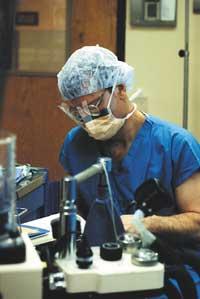
The Biobask project will also promote cancer research. Cancer is the set of many diseases, but its incidence in the population is high, so it should be investigated. So far in the Basque Country, few studies have been conducted on cancer. Biobask, however, will promote projects for his interest in the healthcare system.
On the other hand, a special effort will be made in neurosciences. According to María Agirre herself, “some diseases related to the nervous system are becoming more and more frequent. In addition, as we live in an aging society, this will be a type of disease that generates a great concern.” For this reason, the Basque Government will allocate funds for the investigation of neurodegenerative diseases. The biological base of these diseases and their possible healing will be analyzed. In fact, the University of the Basque Country has spent years researching this type of research and collaborating with hospitals in Osakidetza and biotech companies.
The latter is another of the objectives of the Biobask 2010 project: to promote scientific research in hospitals. In María’s opinion, “in hospitals the research is in a complicated situation, with the aim of having the same importance as that given to the care and management of patients. Above all, it is necessary to collaborate with the rest of the researchers. In fact, those who carry out basic research in universities need the assistance of physicians, who have clinical samples and patient records. They will not be able to know the influence of the new drugs they have developed. And the same for doctors: they will not be able to carry out clinical trials without the research and basic tests that the researchers must perform before their realization.”
Other diseases Other diseases
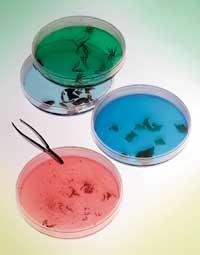
So far, antibiotics have been used to treat diseases or infections caused by bacteria, but this method already offers few new results. Therefore, at the University of the Basque Country/Euskal Herriko Unibertsitatea, research is being carried out that will promote new treatments, since there are research groups with many years of experience. The Biophysics Unit, for example, is investigating the mechanisms of toxicity and infection of viruses and bacteria. It is a question of understanding the activity of toxins produced by bacteria to study the opening of cell membranes and to be able to develop drugs and vaccines against them in the future.
Biobask will also significantly promote research into autoimmune diseases and is also preparing special kits to diagnose fungal diseases. This is, to a large extent, of projects that will play an important role in biosciences.
Participants in the BIOGUNE project:
UPV-EHU (Department of Computer Sciences and Artificial Intelligence; Department of Animal Biology and Genetics; Department of Biochemistry and Molecular Biology; Department of Pharmacy and Pharmaceutical Technology; Department of Physiology; Department of Immunology, Microbiology and Parasitology; Department of Language and Computer Systems; Department of Chemistry. Participants in the MAAB project:
CIC biomat and sanitary products UPV (POLYMAT)
|
After the sequencing of the human genome, a new area of work is gaining great strength: proteomics. Proteomics studies the proteome, that is, the set of all proteins that are formed from a genome.
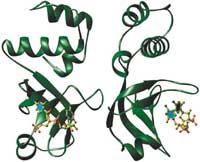
After the sequencing of the human genome, it is now necessary to clarify the information found, so proteins are the new target of researchers. It is necessary to clarify the structure and function of proteins, which are the true workers of the cell, which somehow fulfill the orders written in the genes. And if these proteins are defective or are in inadequate amounts, then diseases are produced. The examples are numerous: Alzheimer’s Disease, Mad Cow’s Disease, and... Proteins are directly involved in pathological processes. Therefore, it is very important to know how proteins are, and in what cases diseases occur. That is, research which protein patterns are kept in each disease.
So far, research has been carried out around proteins, but analyzing proteins separately; in proteomics, a much larger scale is investigated, as in genomics hundreds of genes are sequenced. It is, for example, to analyze all metabolic interactions of each proteome.
At present, in many research lines, such as proteomics or genomics, countless data are collected. To facilitate the correct collection and interpretation of all these data it is necessary to use complex computer programs. This very concrete work has led to a tool that combines biology, computer science and technology: bioinformatics.

For example, before sequencing a gene took months, but today hundreds of genes are sequenced. To interpret all these data, bioinformatics is essential.
For this reason, bioinformatics has experienced a great advance in the last decade and, at the same time, it must continue to develop so that other areas such as forensic medicine, anthropology, pest control, the creation of genetically modified organisms ... are more and more applications that take advantage of the advantages of bioinformatics.





